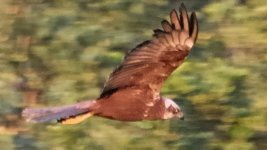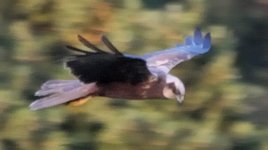WayuU
Greenpeace Nordic Systems Engineer
Hi,
I can't find what species of bird of prey that this one belongs to. The flash marking behind the eye reminds me of an Osprey but not quite the same. It is large, about 1.4 meter wing span.
Another thing that strikes me when I watch this bird (saw it last year too in same area) is that it looks like it has a "fat" head, really fat bordering on owl look when I compare it to all other birds of prey we have here.
Yesterday it hunted a mallard which got away. Last year I saw it hunting and grabbing a Grey heron, also with failure, poor birdie.
Photo taken yesterday in south eastern Sweden on a large lake. This bird prefers hunting among the reeds around the small island costs.
I can't find what species of bird of prey that this one belongs to. The flash marking behind the eye reminds me of an Osprey but not quite the same. It is large, about 1.4 meter wing span.
Another thing that strikes me when I watch this bird (saw it last year too in same area) is that it looks like it has a "fat" head, really fat bordering on owl look when I compare it to all other birds of prey we have here.
Yesterday it hunted a mallard which got away. Last year I saw it hunting and grabbing a Grey heron, also with failure, poor birdie.
Photo taken yesterday in south eastern Sweden on a large lake. This bird prefers hunting among the reeds around the small island costs.
Attachments
Last edited:








